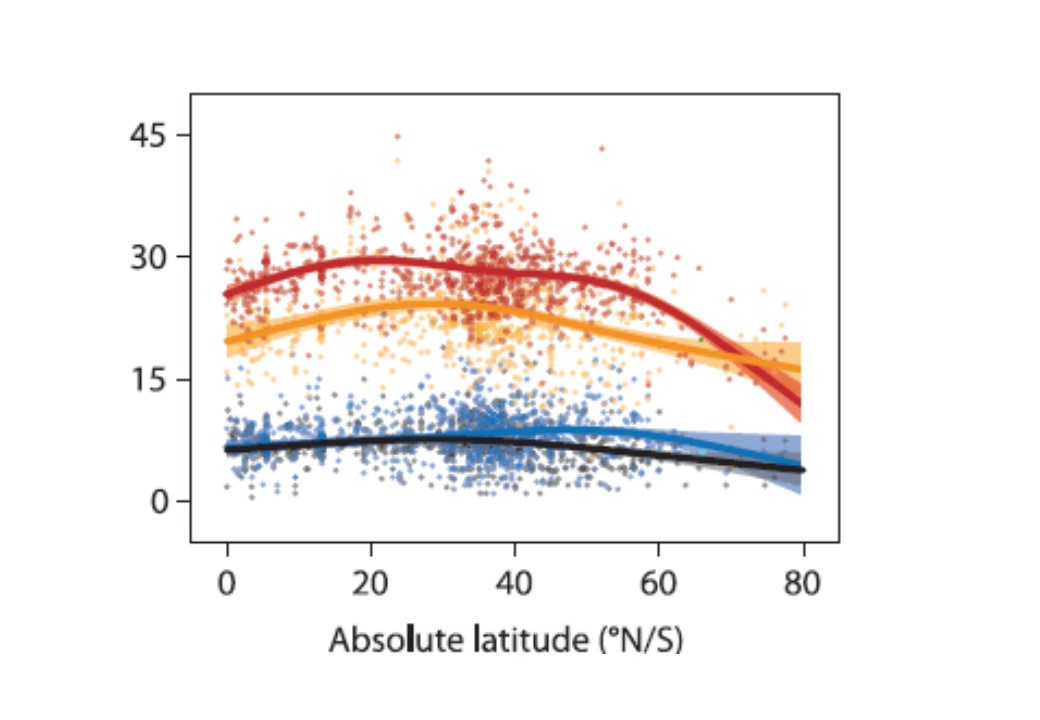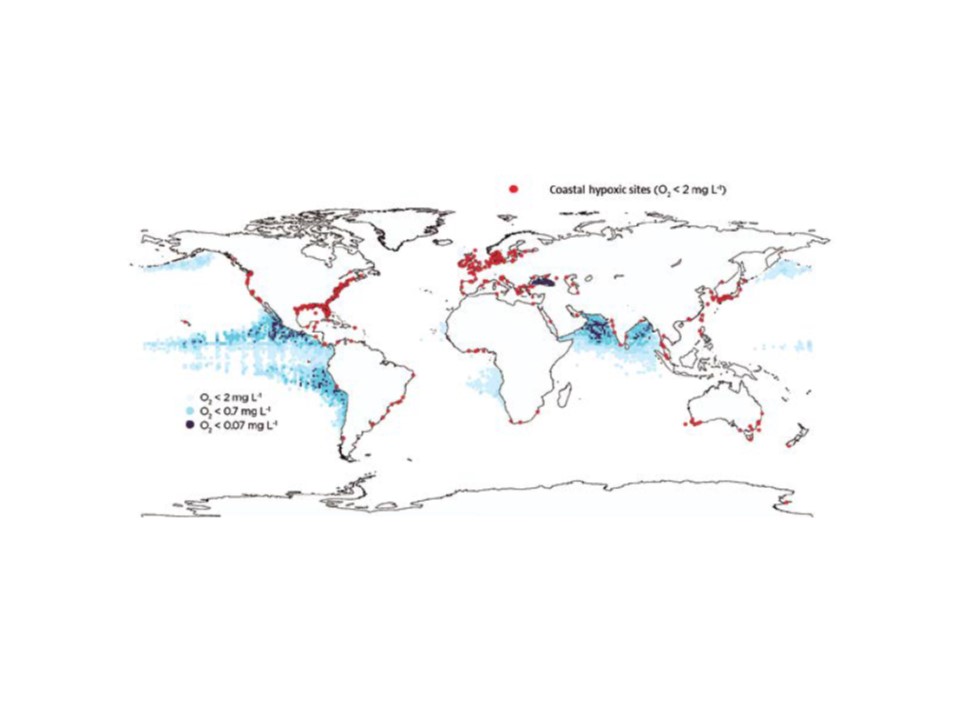In the brink of extinction - many freshwater fishTiistai 12.12.2023 klo 17.23 - Mikko Nikinmaa When I did my Ph.D. thesis 40-45 years ago, the topic: effects of temperature and hypoxia on respiration of rainbow trout, was hardly noticed by the general public. In 1976 we, biology students arranged a theme evening about the pollution of the Baltic Sea and invited media. Nobody came, and when I asked a newspaper reporter why that was the case, he answered that the topic had no general interest. I wish the situation were the same today: fish would not suffer from pollution, increased temperature and decreased oxygen level. Unfortunately that is wishful thinking. IUCN (International Union for the Conservation of Nature) has recently updated its Red List with very worrying information of fish, particularly freshwater fish. A quarter of the freshwater species is in immediate danger of extinction. The most important proximate cause is pollution, but toxicant effects cannot be separated from temperature increases and eutrophication, which causes oxygen lack. All of the previous problems increase parasite loads and cause fish diseases. In addition, overfishing and building of waterways, which has destroyed spawning sites or made it impossible to reach them, decreases fish populations. Below I give a couple of examples of how all of the above cause the disappearance of specific species. First, eels are critically endangered species, which are characterized by their catadromous way of life and long spawning migrations. They grow and reach maturity in freshwater. Their migration from sea to freshwater feeding sites is critically dependent on smell sensing, which is dramatically disturbed by pesticides and metals. Consequently, those types of pollution may be an important cause of declining eel populations. Second, burbot is a coldwater fish. It spawns in the middle of winter, and it is ice-fished in January-February to get the fish and its eggs for soup. Now that the temperature is increasing, burbot is already living at the high end of its temperature tolerance, and may soon become extinct. Another group of coldwater fish is salmon and its relatives. In addition, it requires clear water with high oxygen content. Since both an increase in temperature and eutrophication decrease the oxygen level, salmon and its relatives may become extinct. Lampreys have succeeded in temperate waters for 500 000 000 years. Many of the species live in sea as adults, but spawn in rivers. Because of building of waterways, e.g. hydroelectric power plants, their long saga may be coming to the end. Finally, aquarium hobby is very popular throughout the world. Many of the ornamental fish do not reproduce in captivity, and are thus fished wild. This has made many species endangered because of overfishing.
|
|
Kommentoi kirjoitusta. Avainsanat: environmental pollution, climate change, overfishing, eel, salmon, oxygen, hypoxia |
Fish in high-flow zone of rivers may be the first victims of climate changeMaanantai 25.9.2023 klo 18.56 - Mikko Nikinmaa Fish living in high-flow areas of rivers have chosen (or evolved in) that habitat, because they need a lot of oxygen for their high activity. Flowing water becomes well oxygenated, as it is continuously exposed to air. However, the amount of oxygen taken up by water decreases with increasing temperature, simultaneously as poikilothermic fish need more of it, as temperature increase speeds up their metabolism. If temperature increases enough, fish heart cannot pump enough oxygenated blood to sustain metabolism. This we have clearly shown in our article Anttila et al, Comp Physiol Biochem A 275, 111340 (2023). Although the study was done on seabass, the principle holds also for river fish. The amount of oxygen initially reaching the gills, where it is taken up, further decreases the maximal temperature the fish can tolerate. Zhi et al (Nature Climate Change 2023; https://doi.org/10.1038/s41558-023-01793-3) have shown that the oxygen level in rivers throughout Europe and United States has decreased for the past forty years. While increased temperature was the main driver, the oxygen level decreased more than expected because of temperature increase. It is possible that the general eutrophication with increased oxygen consumption. Regardless, associated with the physiological response to increased temperature of fish, the temperature-caused decrease in maximal amount of oxygen the water holds, can cause extinction of salmonids living in the fast-flowing head streams. |
|
Kommentoi kirjoitusta. Avainsanat: temperature, oxygen, fish physiology, cardiovascular function |
Rising temperature affects fish more than previously thoughtLauantai 15.8.2020 klo 21.02 - Mikko Nikinmaa A recent study in Science (Dahlke et al., Science 369, 65–70, 3 July 2020) has evaluated, how fishes are affected by temperature increase associated with climate change. Fish are an increasingly important food source for humankind, so their success in warming waters is of primary importance for feeding human population. Consequently, the ability of fish to tolerate warming waters has been studied intensively. Earlier, it has been estimated that only 5 % of fish populations would be adversely affected by temperature increase predicted to occur by 2100. A lot of fisheries experts have sucked of relief about this, as overfishing  is a major threat presently, and it is thought that overfishing may decrease fish populations by half before 2050. In fact, it has been estimated that temperature increase would make population sizes of fishes larger in some areas. is a major threat presently, and it is thought that overfishing may decrease fish populations by half before 2050. In fact, it has been estimated that temperature increase would make population sizes of fishes larger in some areas.
The limitation of earlier estimations has been that the possibility that possible differences between temperature tolerances of age groups have not been estimated. This was done in the study by Dahlke et al. The results show that temperature tolerance of different age groups of fish is markedly different. The embryos (developing fish within egg cases) and spawning adults (blue and black lines in the figure) appear to have up to 20oC smaller tolerated temperature range than free-swimming larvae or non-reproducing adults (red and orange lines). The difference is greatest at mid latitudes, and decreases both (and especially) in the arctic and near equator. The reason for decreased temperature tolerance is probably due to mismatch between oxygen uptake and consumption. Oxygen uptake is limiting in the embryos enclosed within eggs, whereas the oxygen transport of free-living larvae and juvenile and non-reproducing adults becomes more effective. In spawning adults the oxygen consumption increases without improvement of oxygen transport. Physiological studies about the interaction between temperature, oxygen transport and consumption are needed in different life stages of fish to enable conclusive evaluation of what causes life stage-dependent variation of temperature tolerance. Regardless of the reason, it can be estimated that almost half of the fish stocks will be adversely affected by the temperature increase taking place, if the present international agreements are fulfilled. Together with the reduced stocks because of overfishing this can result in marked reduction in the fish food available to humankind. However, if we would do appropriate climate actions, one could prevent virtually all effects on fish populations. |
|
Kommentoi kirjoitusta. Avainsanat: climate change, fisheries, oxygen transport |
Hypoxia acts together with pollutants to decrease animal success in aquatic environmentsTorstai 13.2.2020 klo 13.55 - Mikko Nikinmaa Hypoxia is recognized as one of the most important problems for aquatic organisms. The ocean deoxygenation problem is the subject of a recent IUCN report, downloadable from https://www.iucn.org/resources/publications. Deoxygenation is not acting alone. Many anthropogenic pollutants cause oxidative stress. In recent years, measuring parameters associated with oxidative stress has become one of the favourite areas among aquatic toxicologists. Thus, one would have expected that investigations about interactions between hypoxia and pollutants causing oxidative stress would be common. However, this is not so, even though the interactions may cause increased mortality either directly or by affecting energy metabolism, or decreased reproductive success either directly or by decreasing energy available for reproduction. The reason for this is that hypoxia responses normally take place in or are initiated by reducing environment – hypoxia in absence of pollutants is such an environment. Already in 2004 we published a paper (Nikinmaa et al., Journal of Cell Science 117, 3201-3206) concluding: “As redox reactions play a pronounced role in the stability, DNA binding and phosphorylation of HIF-1a protein in salmonid cells, it is likely that environmental disturbances involving oxidative stress, such as metal or organic pollutant contamination and increased UV radiation, may influence HIF-1a protein function and consequent gene expression.” Already then the importance of HIF (Hypoxia-Inducible Protein) was clear, but its importance in regulating hypoxia responses was emphasized by the Nobel prize, which was given to scientists (Semenza, Ratcliffe and Kaelin), who have clarified its regulation. We showed in 2004 (Vuori et al. Aquatic Toxicology 68, 301-313) that the reproductive disturbance of Baltic salmon, which may be associated with oxidative stress, is also associated with HIF dysfunction. If hypoxic conditions occur together with oxidative stress, the combination may be fatal, because the hypoxia response pathway is disturbed. While the above scenario is hypothetical, it clearly shows the possibility of hypoxia-oxidative stress interactions, and the reason and rationale for studies investigating them. As a third component for such studies is temperature increase, occurring together with the spreading of hypoxic areas. |
|
Kommentoi kirjoitusta. Avainsanat: climate change, hypoxia-inducible factor, oxygen-pollutant interactions |
Deoxygenation of oceans is an increasing problem with effets on sealifePerjantai 13.12.2019 klo 18.01 - Mikko Nikinmaa The deoxygenation of the seas has increased markedly during the last 100 years. The areas with reduced oxygen have increased ten times between 1900 and 2000. There have always been oxygen-minimum zones in oceans, but their volume has increased markedly in the recent past, because of decreased ocean circulation and as a result of increased respiration following elevated temperature. In addition to the climate change-caused increase in hypoxic seas, the eutrophication of coastal areas because of human actions have caused pronounced low-oxygen areas especially in the traditionally industrialized western countries.
Spreading hypoxia is a major problem, as it decreases the populations of fish and other organisms. It further affects the species distributions with more preferred species decreasing and decreases biodiversity. The effects of reduced oxygen level as such are aggravated by an increased water temperature, i.e. climate change, because the oxygen consumption of fish and other poikilothermic animals increases with temperature increase. Simultaneously, the oxygen solubility in water decreases. Even this isn’t enough, but the oxygen binding by haemoglobin is reduced at a given oxygen tension with increased temperature. This reduces the capability of fish and other animals to survive in hypoxic conditions. This makes it more difficult of animals to tolerate increased temperature. So, climate change and the pollution of the seas together cause deoxygenation. The pollution further decreases the capability of microscopic algae to produce oxygen by photosynthesis. To combat the deoxygenation problem we need to stop eutrophication, and sea pollution by wastewater cleaning. Further, we need to combat climate change much more effectively than we have hitherto done. We need healthy seas to be able to feed the world, and the current increase in ocean deoxygenation is not doing that. The ocean deoxygenation problem is the subject of an IUCN report, downloadable from https://www.iucn.org/resources/publications. (p.s. I have been studying hypoxia responses in fish from1980). |
|
Kommentoi kirjoitusta. Avainsanat: climate change, aquatic pollution, hypoxia, oxygen transport |

